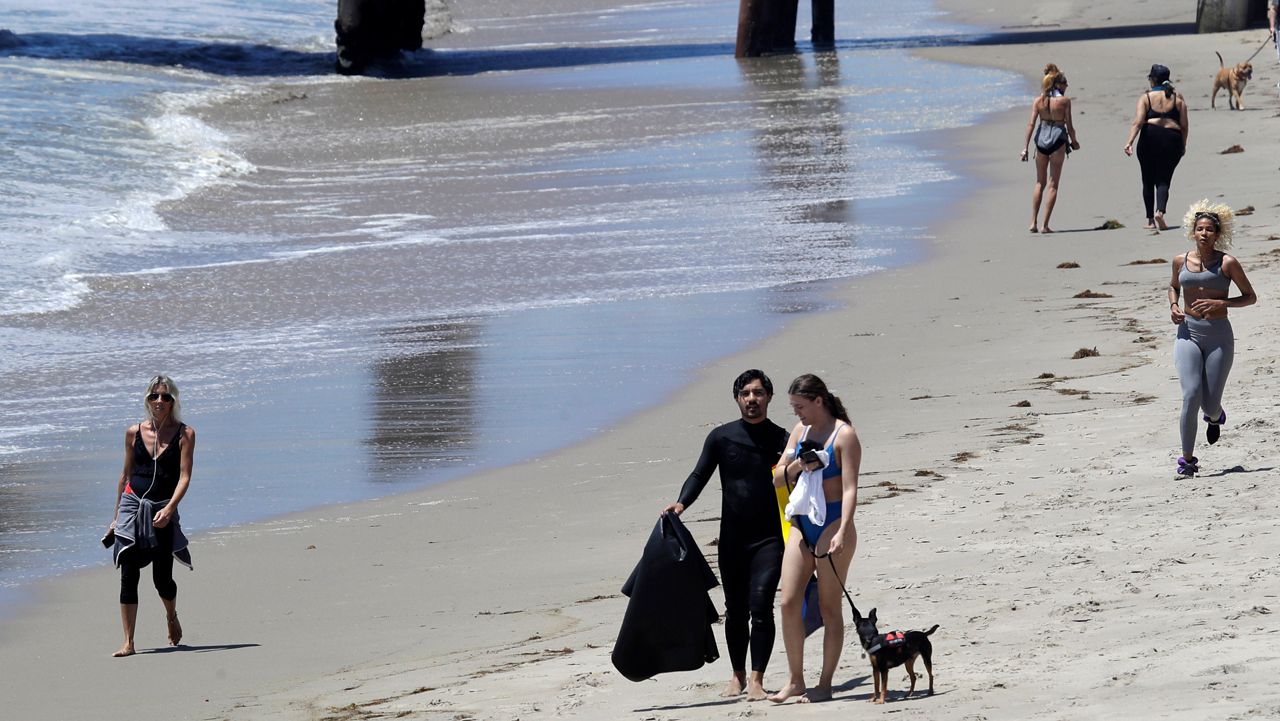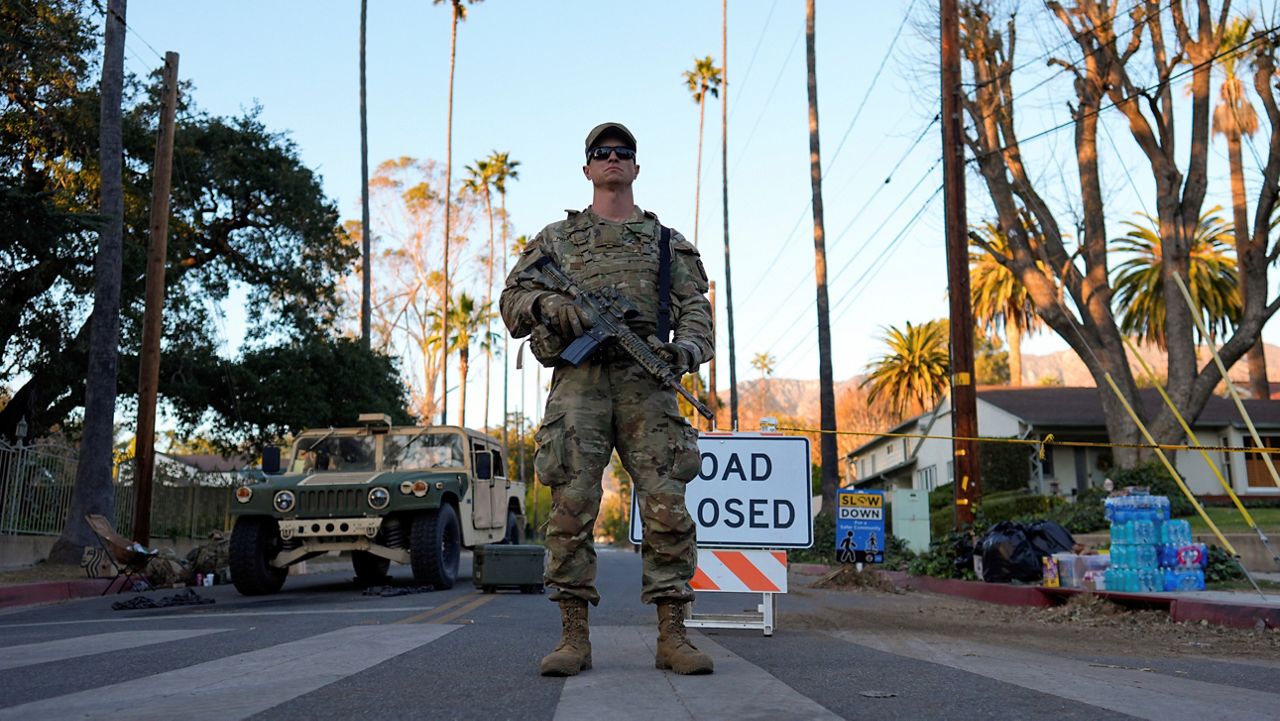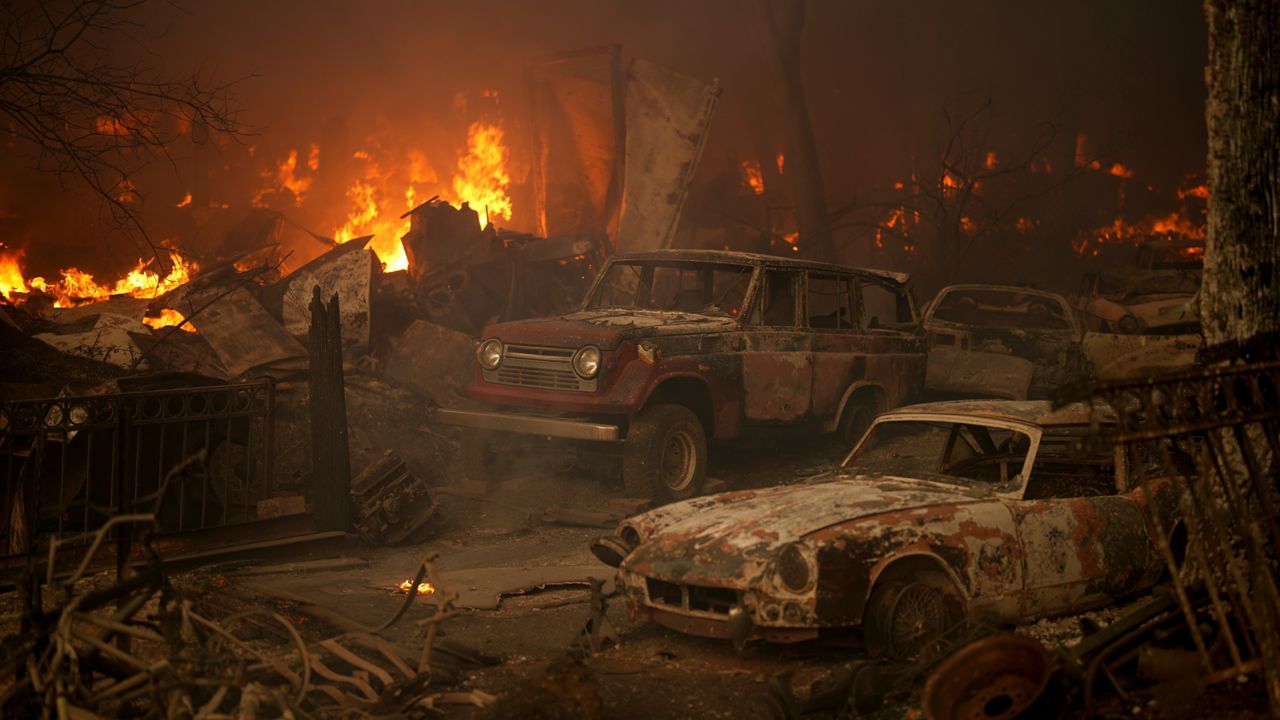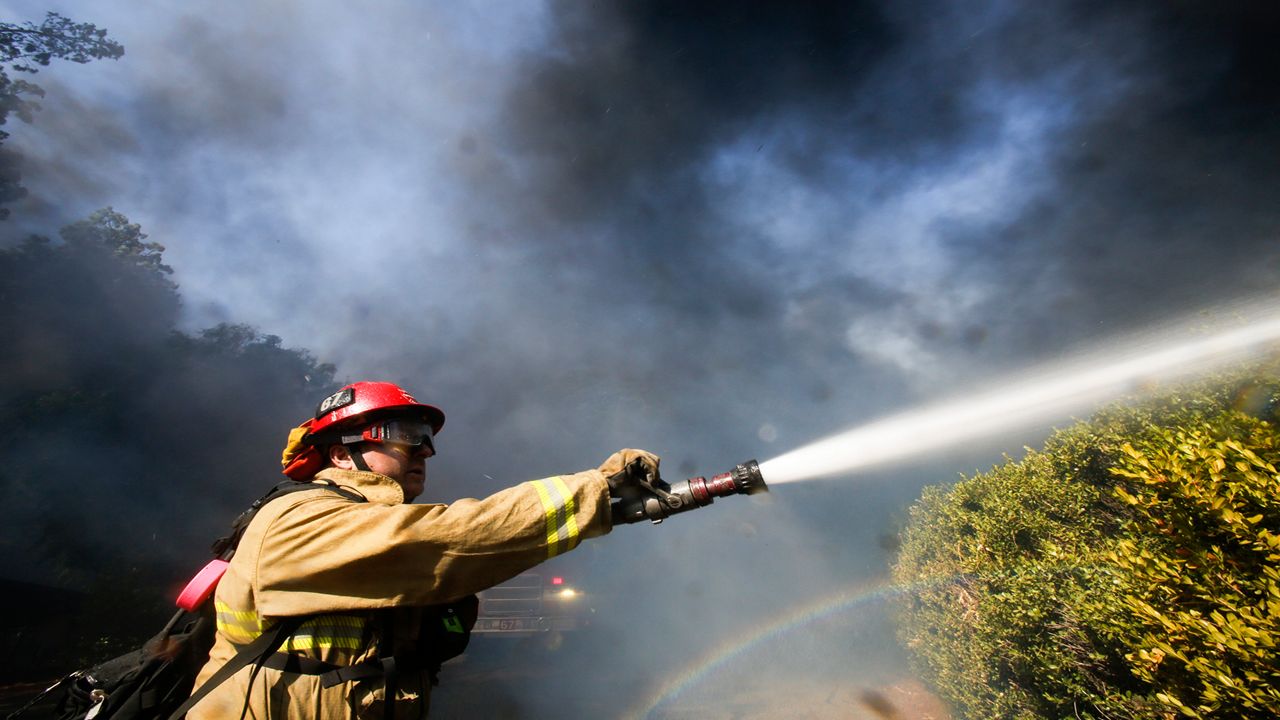AGOURA HILLS, Calif. — Many would not think of a tractor first as a means to fight fires, but for the past 30 years, that is how Charlie Whitman has been protecting the Santa Monica Mountains.
What You Need To Know
- Fuels treatment programs focus on 250 acres in five strategic treatment areas
- Crews also manage 85 acres of defensible space at more than a dozen locations throughout the Santa Monica National Recreation Area
- Cutting down tall grass can reduce flame length from 20 feet to two
- Crews use tractors and weed whippers to manage fuel in public spaces
While Whitman has been the driving force in the field of fire prevention, he is hanging up the keys after decades of service.
“You’re gonna be sorely, sorely missed,” trails crew supervisor Tara Hallman told Whitman as he gave the crew directions on his final day before retiring.
For his last ride, he carefully chose his favorite tractor, “the one that’s got the fuel in it,” he said laughing.
Fuel is the focus of Whitman’s work — although not the kind that tractors run on. The entire purpose of his program is to reduce available fuels so the area is less flammable.
“Pre-treatment the grass could be as tall as chest high and flame lengths that could be generated off of that could exceed 20 feet,” he explained.
Mowing the grass down, however, means potential flame lengths also go way down. Less than two feet instead of the 20 feet, according to Whitman — generating a lot less heat.
Clearing the land also creates firebreaks and escape routes for residents should the roads become impassable. In addition, since oxygen cannot swirl as freely through the mowed grass, embers could potentially not be carried as far.
“If the fire’s on that hill, the embers have got to fly all the way over and then threaten the structures,” he said while standing in a clearing at the entrance to Malibu Creek State Park. “So when the Woolsey Fire came through here, these homes survived and it had a lot to do with this reduced fire intensity that’s a product of these fuels treatments.”
A lot of what Whitman knows about fire behavior comes from firsthand experience.
At his high school graduation, he met a recruiter who was looking for people to fight wildfires. Whitman went straight into training and spent 15 years as a hotshot, flying with helicopter teams to fight wildfires up and down the coast.
“It seemed like a lot of fun and it really was,” he remembered.
After becoming a father, however, he decided to trade in his helicopter for a tractor, and a job where he could apply what he had learned on the ground.
“You know with all that fire experience, you saw what influenced fire behavior and fire outcomes,” he explained. “Oftentimes it was changes in fuels.”
Part of his program focuses on 250 acres in five strategic treatment areas including Reagan Ranch.
Crews also manage 85 acres of defensible space at more than a dozen locations throughout the Santa Monica National Recreation Area.
It is a top priority locally and getting more attention and funding nationally, too.
The Biden administration has proposed a budget for 2022 that requests an additional $84 million for fuels management.
As he steps away from his career — or changes the channel, as he put it — Whitman still worries.
The next generation is inheriting increased fire frequencies but they are also inheriting his plan.
“Charlie is awesome,” Hallman said, a weed whipper casually perched on her shoulder. “He creates so many maps, so many diagrams about where we need to treat, and how much and what type of fuels there are so he’s got it set it up and ready to go to continue on.”
“The future is these people right here,” Whitman said of the trails crew before hugging them all goodbye.
He hopes they will continue to apply what he has taught them, work proactively and adapt to changing conditions.
“I guess it’s time to let another generation take it on and come up with their own assumptions of what’s appropriate,” he said.
Retiring comes with a lot of emotions, but Whitman leaves confident that he accomplished his career long goal: to help protect lives, land and property from wildfires.
“As time goes on you recognize the value of the work you are doing and its ability to improve protection,” he said, “So that was something that I’m currently conscious of.”
It's a satisfying feeling to fuel him as he rides off into the sunset.











